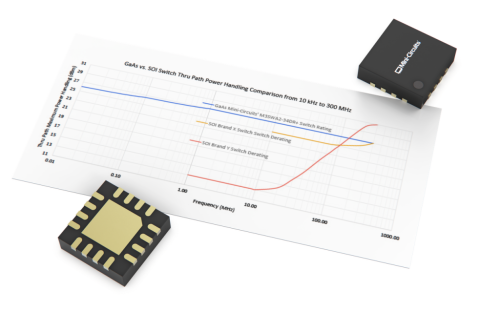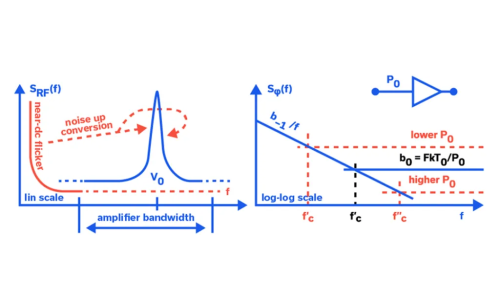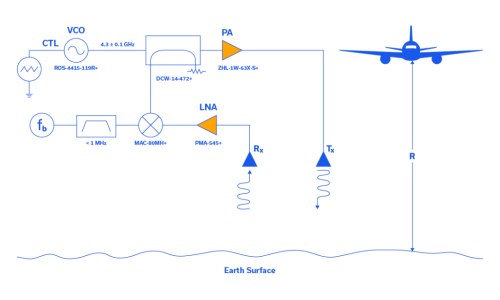Impact of Date Code Age Restrictions on Quality, Service, and Value
Introduction
Extensive studies done by industry leaders, NASA and the U.S. military have shown substantial evidence that in modern storage environments, time intervals of five years or longer between manufacture of components and shipment to OEMs pose virtually no risk to the quality or reliability of electronic products. Date code based age restrictions were originally imposed due to concerns about age-related oxidation of eutectic (or tin-lead plated) parts and loss of component solderability. The subsequent replacement of tinlead solder with lead-free solder in RoHS compliant parts has since minimized the cause of this failure mechanism. Additionally, advances in product packaging and storage such as bagging, taping, and moisture control techniques now provide robust protection from electronic degradation and “out-of-the-box” failure due to age for time periods in the order of decades (i). As a result of such findings, the US military has eliminated date code requirements for electronic products altogether (ii), and NASA has significantly relaxed its standards, allowing a five year window before parts in storage are reviewed to determine the need for re-screening (iii).
Industry practices before 1995, U.S. military specification MIL-PRF38585 (section 3.10) required retesting of electronic parts unused after a three year window from the marked date code. In 1995, the military reviewed this specification, and after extensive study on product aging, date code restrictions were removed from the specification. Current military practice as specified in MIL-PRF-19500P states simply, “all parts shall be capable of passing the solderability test in accordance with method 2026 of MIL-STD-750 on delivery. Re-inspection of solderability is not required by this specification.” The policy on date code limitation states explicitly that acquisition documents should not contain restrictions on date code. This policy, in effect, eliminates date code restrictions as a requirement for procurement of electronic parts.
NASA’s Instructions on EEE Parts Selection, Screening, Qualification and Derating (NASA/TP2003-212242, EEE-INST-002) states that parts drawn from inventory with lot date codes older than five years must simply be “reviewed to determine the need for re-screen.” While NASA’s policy stops short of eliminating date code restrictions entirely, it indicates high confidence in the quality and reliability of parts stored in properly controlled environments for up to five years without the need for re-testing.
A well-known paper published by the National Electronic Distributors Association (NEDA), lays out a convincing case for the elimination of date code limitations based on the use of age resistant materials and proper storage and handling. The authors, a cooperative task force from thirteen leading electronic manufacturers and distributors, assert that while date code limitations were initiated using the old military specification as a benchmark, many OEMs retained short date code age restrictions even after the military specification was revised. According to the paper, “The origin of many customer date code specifications may be attributed to [a] now revised military standard and has no factual or empirical basis (iv).
Industry members have independently investigated the effects of product age on quality and reliability as well. In 2008,a detailed study by Texas Instruments found the shelf-life for IC devices stored in a warehouse environment to be greater than 15 years when packing materials were periodically replaced to control moisture levels (v). More recently, an increasing number of RF/IF and microwave electronic product suppliers have modified their internal policies on product aging to extend schedules for retesting of warehoused components from three years to five years.
There is currently no known industry or military standard that provides a widely accepted requirement or schedule for retesting of electronic components in storage. Limitation on product date codes is a customer-driven phenomenon. Despite the range of studies and industry practices that discredit the significance of date code age to product quality and performance, stringent date code age restrictions remain common practice among many OEMs. Many customer policies restrict acceptance of products to those with date codes no older than two years, and some require a window as narrow as six months. Such policies are not only contradictory to the most current authoritative studies on the “shelf life” of electronic components, but also inherently prone to shipping delays, order returns, and other costly errors. Moreover, inordinately short age restrictions disrupt FIFO-based inventory logistics, resulting in further aging of older inventory and greater waste as requirements for newer units are continuously issued. The costs of static inventory and waste are realized in the short term by manufacturers and distributors as increased business costs, and in the long term by customers as increased prices without adding any verifiable value to the quality of products or services.
Mini-Circuits Corporate Policy on Date Code
Mini-Circuits maintains device date code controls per ISO9001 and AS9100 documented procedures, in accordance with MIL-PRF-19500. These procedures rely on historical data to determine the retesting schedule and sample size to qualify components in inventory. The expiration periods for connectorized and surface mount components are shown below in table 1. After these expiration periods, subsequent retest is required for an extension of one year. Acceptance date and approval appear on the package label for these runs.
As a manufacturer of many various device case styles, a blanket approach to product retesting is not a value-added practice for Mini-Circuits. Certain surface mount finishes such as Silver Plated or Palladium Silver (PdAg) terminations on LTCC products and electro-less nickel immersion gold (ENIG) are more sensitive than others, so the period for retesting for these parts is significantly shorter than that for surface mount components with less sensitive finishes.
From May 2014 through June of 2015, a total of 605 lots in storage, comprising over 1.2 million surface mount units were retested for solderability and electrical performance in accordance with Mini-Circuits’ standard policy on product aging and date code. Not a single lot among these was scrapped due to solderability or performance failure. All Mini-Circuits parts from stock are guaranteed to meet all electrical, mechanical and environmental specifications regardless of date code. The standard product warranty as stated in our Terms and Conditions, starts at the date of shipment and is independent of reel label or device marking.

Conclusion
Mini-Circuits, along with other suppliers of RF/IF and microwave products, strives to continuously improve its products and processes in order to deliver the highest level of quality and service to end customers. Studies by industry leaders in RF component manufacturing as well as defense, aerospace, IC manufacturing, and other fields all strongly suggest that abatement of date code age limitations stricter than those self-imposed by reputable component manufacturers and authorized distributors will result in faster and more efficient order fulfillment processes, fewer order returns and an overall improvement in service to the customer.
References
i. R.R. Madsen, Component Reliability After Long Term Storage, Texas Instruments Application Report, SLVA304, May, 2008
ii. MIL-PRF-19500M, Section 6.2.j.
iii. NASA/TP-2003-212242, EEE-INST-002: Instructions on EEE Parts Selection, Screening, Qualification and Derating (page 16/338)
iv. Managing Date Code Restrictions on Orders for Electronic Components: An Industry Position Paper, p. 2, NEDA publication, December 2002
v. R.R. Madsen, Component Reliability After Long Term Storage, p. 13, Texas Instruments Application Report, SLVA304, May, 2008











